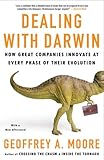Innovation, standardization and commoditization
If Silicon Graphics ran Christmas...
Ornaments would be priced slightly higher, but would hang on the tree remarkably quickly. Also the colors of the ornaments would be prettier than most all the others. Options would be available for 'equalization' of color combinations on the tree. — Internet joke, Dec. 1998.
Merc columnist Mike Cassidy had a poignant column Tuesday (also available here) on the liquidation of SGI (born Silicon Graphics). One excerpt:
There was a can-do and why-not attitude all rolled into one. One of the first people I met at SGI was Joe DiNucci, the vice president of marketing who worked at the company for five years ending in 1997.DiNucci recalls when SGI was on the cover of Business Week, giving additional credence to the Paul Krugman line: “Whom the Gods would destroy, they first put on the cover of Business Week.”
Yes, he remembers the good times.
"There really was an entrepreneurial spirit there," he says. "The dark side of it was that it was kind of frat boy, locker-roomish."
But that sort of zeal and bravado meant that everyone talked to everyone and good ideas were infectious. "You could turn the company," says DiNucci, a valley veteran. "If you had a great idea and you had balls, you could make something happen."
And plenty did, starting with developing a way to create moving 3-D images on a computer screen. It was a lightning bolt at the time, and it was SGI's franchise.
Sure enough, Peter Burrows of BW, linked to some of this early coverage in his own column last week on the death of SGI (complete with a faux cover):
I think once upon a time, I would have shared in this nostalgia, but not today. Perhaps it was because I just missed becoming a Unix workstation geek when I jumped to the Mac in 1986. But I think it’s because as a researcher (and middle-aged industry veteran), the death of SGI seems like the natural order of things.There was a time when Silicon Graphics Corp. was the Apple Inc. of corporate computing. It received coverage out of all proportion to its size, certainly by BW. And for good reason: It involved larger-than-life characters such as Jim Clark, who went on to co-found Netscape. SGI was forever on the cutting edge of technology innovation, and pioneered use of powerful computing technology in the making of movies, game consoles and for early Web companies in the mid-1990s. And it was a lightning rod in the best sense, always a central player in the big debates roiling the computer industry (workstation vs minicomputer, Risc vs Cisc and UNIX vs Windows, come to mind).
The normal progression is that maturing technologies get standardized, and standards enable commodization. Doing something unique lasts for a while, but unless you control a proprietary standard (possible but not likely) eventually there will be less control and more competition.
Competition engenders efficiency and price cuts for buyers, fueling adoption. The impact on innovation is mixed: competition can fuel innovation wars (as in cellphones) or it can squeeze margins and squeeze out R&D dollars (as in PCs).
So if some companies creating cool innovation in the high-risk, high-growth period — but fail during commoditization — that’s a dog-bites-man story. A few companies such as Apple, and IBM have re-invented themselves multiple times, but the cadre of one-great innovators seems much larger: Cray, DEC, Motorola, Sun. (Ironically, according to Wikipedia SGI once owned Cray, which in its latest incarnation is still making top-ranked supercomputers — only now using commodity processors).
I didn’t have this perspective as a 21-year-old software engineer or a 29-year-old entrepreneur — in part because I was young, and in part because (other than the BUNCH) the computer industry hadn’t seen a lot of casualties yet.
 For my students, I try to sensitize them to this perspective: both the natural life-cycle of an industry and also the different sources of competitive advantage that firms need at different points in the life-cycle. As in previous years, I believe the best way to bring this realism to 20-something students is to assign Geoff Moore’s Dealing with Darwin, and I will be using it again in the fall.
For my students, I try to sensitize them to this perspective: both the natural life-cycle of an industry and also the different sources of competitive advantage that firms need at different points in the life-cycle. As in previous years, I believe the best way to bring this realism to 20-something students is to assign Geoff Moore’s Dealing with Darwin, and I will be using it again in the fall.

![[feed]](http://photos1.blogger.com/x/blogger2/6971/993546936938810/1600/z/962294/gse_multipart3851.gif)

No comments:
Post a Comment